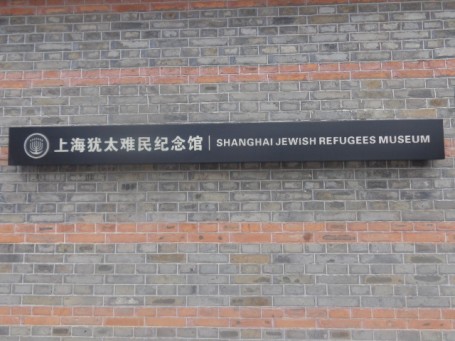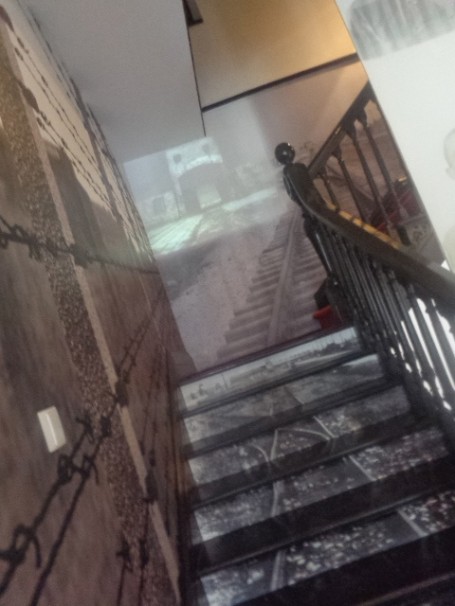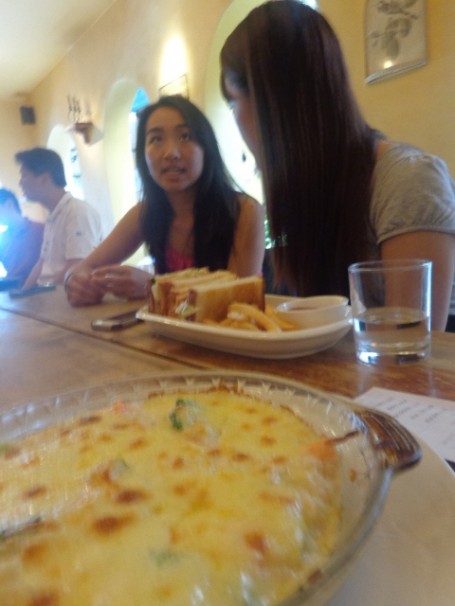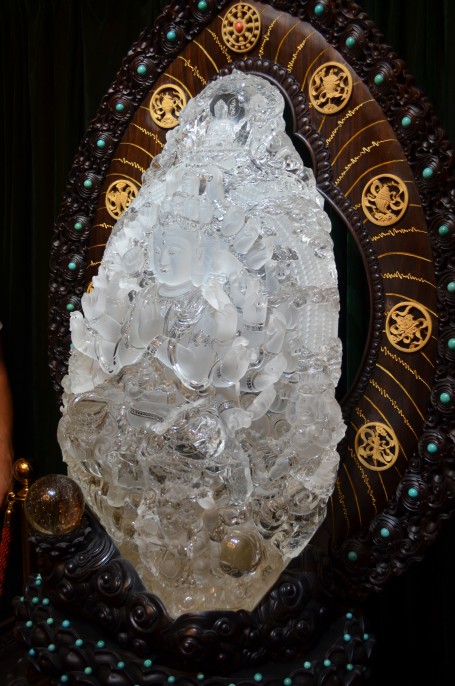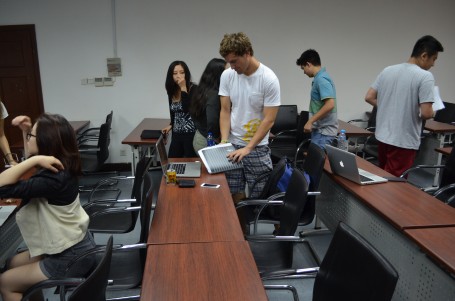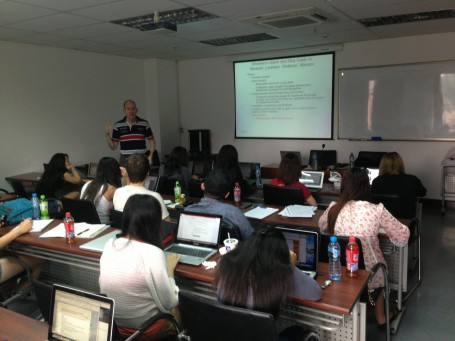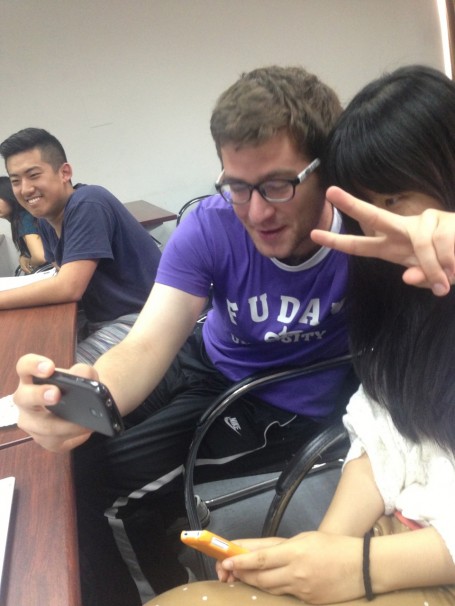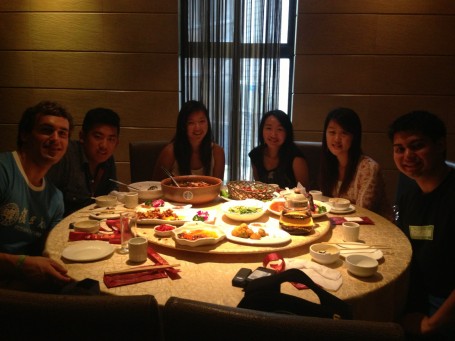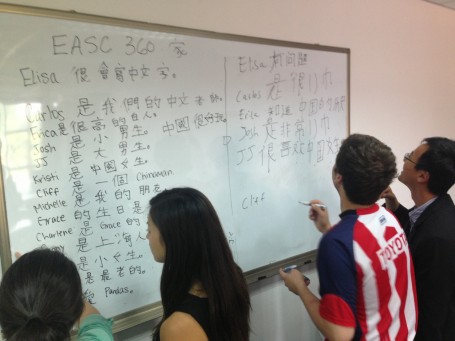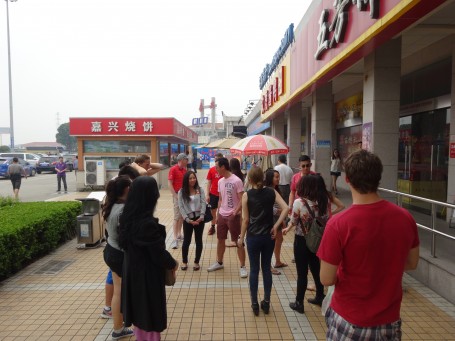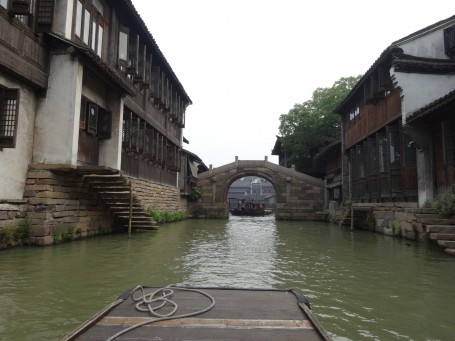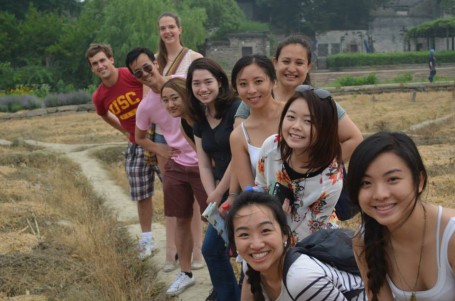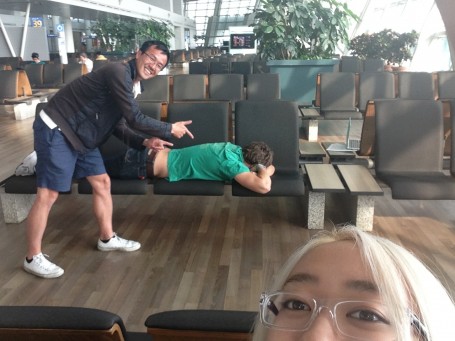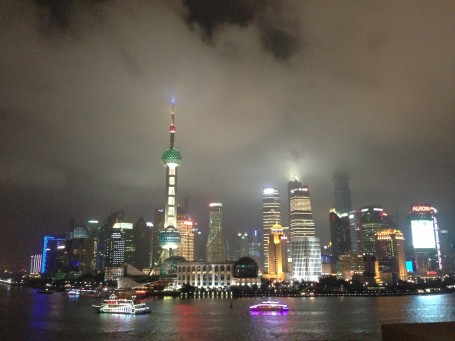By Charlene Tran and Tyler Tokunaga
9 June
We said goodbye to Beijing and caught our very first train in China to Zhengzhou. At the speed of 307 Km/ Hr, the image of the vibrant city of Beijing quickly faded into the background from the window view to give way to vast rice fields that stretched as far as an eye can see. While the cities of China constantly reform themselves to catch up with the pace of globalization, the vibrant agriculture in the countryside remains the firm foundation of China’s economic development by embracing and nourishing lives. Instead of taking a nap, some of us took advantage of this rare opportunity to contemplate the beautiful scenery of the countryside and let our thoughts be carried away.
Zhengzhou, a provincial-level city that not many know of is actually home to a population of roughly seven million Chinese and is a political, economic, technological and educational center of Henan Province. We arrived in Zhengzhou in the afternoon and after lunch, we went to the city center of Zhengzhou, also known as Zhengzhou New Area or Zhengzhou Eastern New District. On our way there, we saw both sides of road being crowded with ongoing constructions of apartment and office buildings while various parts at the middle of the road were fenced for construction of highway bridges. At Zhengzhou New Area, our bus stopped at a large park along the river opposite to Zhengzhou International Art Center. We felt as if we had entered a completely new country; the area was devoid of traditional Chinese characteristics while having an advanced city design with a combination of ecological city and ring city ideas. Many buildings were also branded “International” to blend in with and enhance the modern feel of the city.
Zhengzhou New Area, despite its cosmopolitan look, is China’s largest ghost town. The park by the river was filled with visitors, who came to enjoy the greenery and beautiful man-made marshes, but rows and rows of newly constructed luxury apartment, hotel, and business buildings surrounding it still sat empty on vast, deserted boulevards. The lack of demand for these new constructions was indicated by missing air conditioner units. Will life spring up in this “ghost town” in the near future? The answer, perhaps, depends on how fast Zhengzhou New Area can become a center of capital flow to attract foreign investments and a place where jobs are better paid and easily found to encourage migration of workers from rural areas to the city center. At around 5pm, we left Zhengzhou New Area and headed to our hotel to check-in and have dinner.
After having a filling family-style dinner at the hotel, some of us went with Professor Sheehan to the shopping center of Zhengzhou at around 7pm. We met a very friendly female taxi driver who was also our age and college student. During the entire taxi ride, she chatted wholeheartedly with Elisa and Grace, our two Chinese-speakers, and even took a photo with us. The shopping center was crowded and lively, and a popular spot for locals to spend their night. Many of the shops had English names, and some were named after global brands, such as Playboy, even though the products were not related. The middle of the road was fenced up for the construction of the first subway line in Zhengzhou. On the fences, we saw images that portrayed the future Zhengzhou, moving towards modernity, consumerism, and globalization.
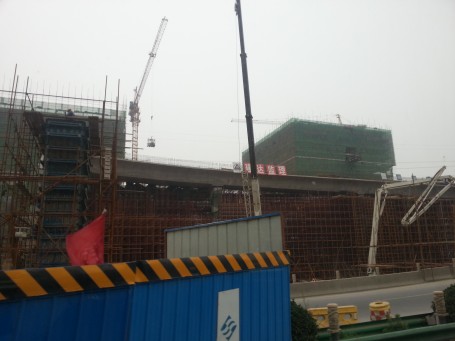
Construction at the “Ghost town”
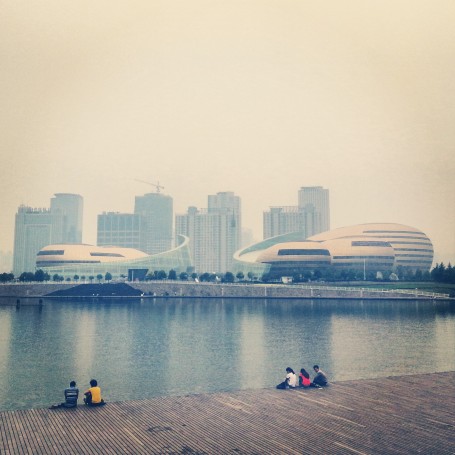
Zhengzhou New Area
Continue reading →

